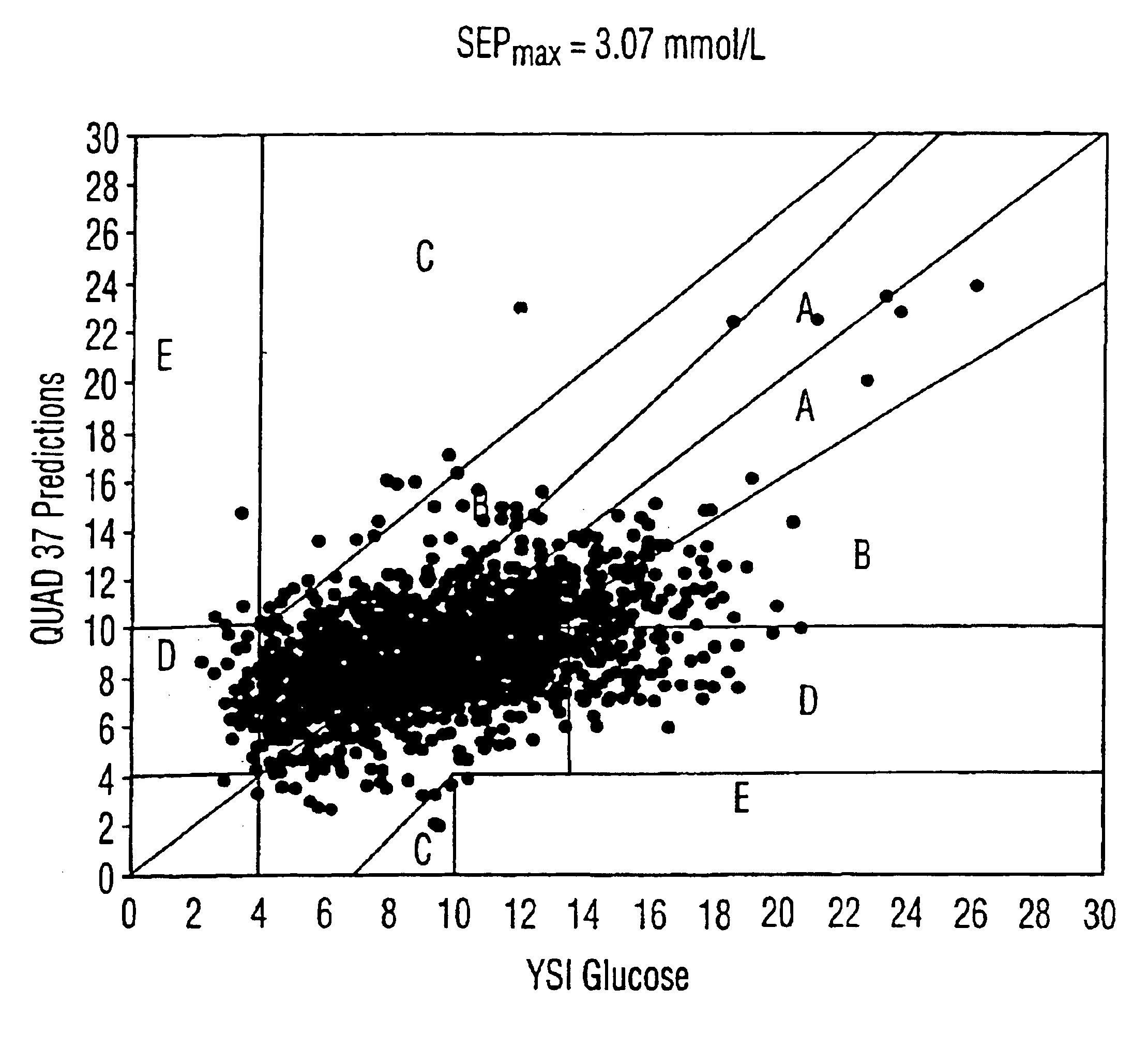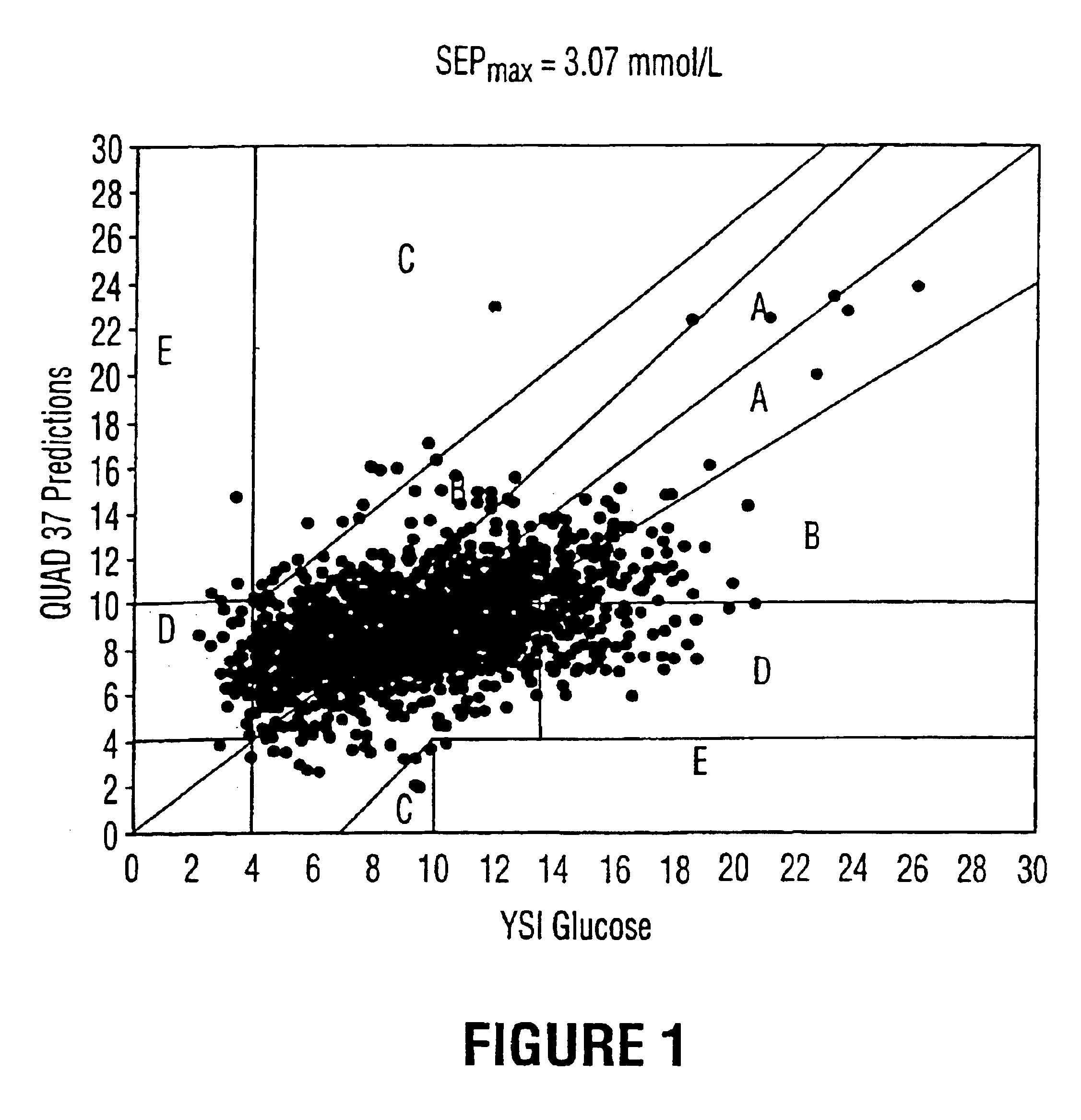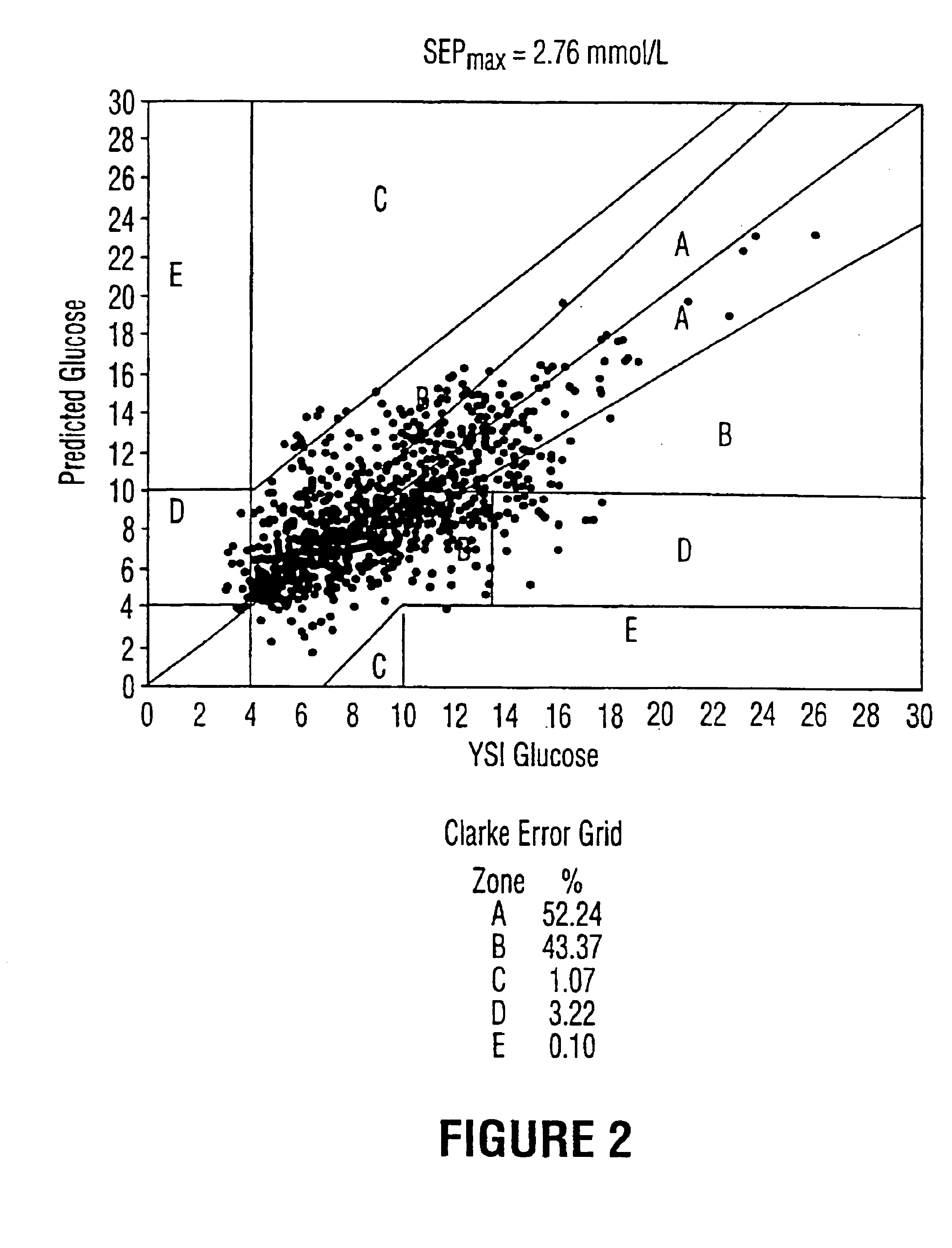Method of calibrating a spectroscopic device
- Summary
- Abstract
- Description
- Claims
- Application Information
AI Technical Summary
Benefits of technology
Problems solved by technology
Method used
Image
Examples
Embodiment Construction
[0036]As mentioned, the present invention relates to a method of calibrating a spectroscopic device for predicting analyte levels in a non-invasive manner. The present invention can be used with a typical NIR spectrophotometer system having a light source which is projected through the item to be examined, a sample interface mechanism, a spectrometer to separate the light into its component wavelengths, a detector, amplification electronics and a computer. By measuring the loss (absorption), between the source and the detector and applying appropriate chemometric (mathematical) techniques, it is possible to non-invasively determine the chemicals being examined since different chemicals absorb different amounts of light at different wavelengths. Such a spectrophotometric device and method are described in detail in U.S. Pat. No. 5,361,758, the contents of which are incorporated herein by virtue of this reference. While the present description relates primarily to glucose measurement,...
PUM
 Login to View More
Login to View More Abstract
Description
Claims
Application Information
 Login to View More
Login to View More - R&D
- Intellectual Property
- Life Sciences
- Materials
- Tech Scout
- Unparalleled Data Quality
- Higher Quality Content
- 60% Fewer Hallucinations
Browse by: Latest US Patents, China's latest patents, Technical Efficacy Thesaurus, Application Domain, Technology Topic, Popular Technical Reports.
© 2025 PatSnap. All rights reserved.Legal|Privacy policy|Modern Slavery Act Transparency Statement|Sitemap|About US| Contact US: help@patsnap.com



